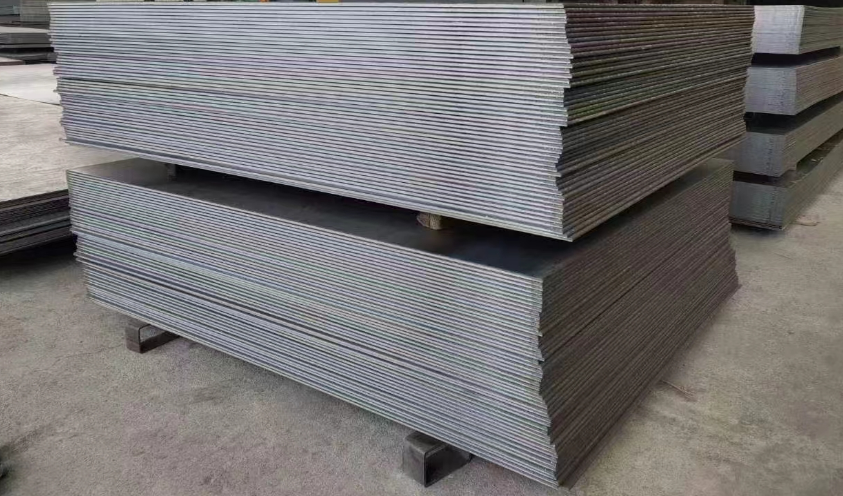Many people have such a question: why is stainless steel harder than pure iron? The reason why stainless steel is harder than pure iron lies in the complex interactions between its alloy composition, microstructure, and heat treatment processes. In this blog post, we will provide a detailed and technical explanation of these underlying mechanisms.

Why Is Stainless Steel Harder than Pure Iron? – Reason 1. Alloy Composition
The fundamental difference between stainless steel and pure iron lies in their alloy composition. Pure iron is composed of a single element, iron, with a relatively simple atomic structure. In contrast, stainless steel is an alloy of iron with the addition of chromium, typically at least 10.5% by weight, as well as other elements such as nickel, carbon, and possibly molybdenum, titanium, and niobium.
Chromium is the key element that gives stainless steel its corrosion resistance and durability. It forms a protective oxide layer on the steel’s surface, known as the chromium oxide layer, which prevents oxygen and water from penetrating the metal and causing corrosion. This layer is self-repairing, as it reforms when scratched or damaged.
Nickel is another important addition to stainless steel, primarily used to maintain the austenitic structure of the metal. Austenite is a non-magnetic phase that maintains the steel’s ductility and toughness even at room temperature. Nickel also enhances the corrosion resistance of stainless steel.
Carbon, in the form of carbides, plays a crucial role in the hardening of stainless steel. Carbon increases the hardness and strength of the steel but can also decrease its corrosion resistance if present in excessive amounts. Therefore, the carbon content in stainless steel is carefully controlled.
Other elements, such as molybdenum, titanium, and niobium, are added to further enhance the corrosion resistance and mechanical properties of stainless steel.
Why Is Stainless Steel Harder than Pure Iron? – Reason 2. Microstructure
The microstructure of a material refers to the arrangement of its constituent atoms and particles on a microscopic scale. The microstructure of stainless steel is significantly more complex than that of pure iron, due to the presence of multiple alloying elements.
Pure iron has a relatively simple microstructure, consisting primarily of iron atoms in a close-packed arrangement. However, stainless steel can have a range of microstructures depending on the alloy composition and heat treatment processes it undergoes.
The most common microstructure in stainless steel is the austenite phase, which is non-magnetic and has a face-centered cubic (FCC) atomic arrangement. Austenite is stable at high temperatures and is maintained in stainless steel through the addition of nickel and other stabilizing elements. Austenitic stainless steel exhibits good ductility, toughness, and corrosion resistance.
In some stainless steel grades, such as martensitic stainless steel, the austenite phase can be transformed into a harder and more brittle phase called martensite through a process called martensitic transformation. This transformation occurs when the steel is cooled rapidly from a high temperature, typically in a quenching process. Martensite has a body-centered tetragonal (BCT) atomic arrangement and is characterized by its high hardness and strength.
Why Is Stainless Steel Harder than Pure Iron? – Reason 3. Heat Treatment Processes
Heat treatment plays a crucial role in determining the hardness and mechanical properties of stainless steel. Different heat treatment processes can significantly alter the microstructure and hardness of stainless steel.
Annealing is a heat treatment process that involves heating the steel to a high temperature, holding it for a period, and then cooling it slowly. This process relieves internal stresses, improves ductility, and softens the steel. Annealing is typically used to prepare stainless steel for machining or forming operations.
Quenching is a process where the steel is heated to a high temperature, above its critical transformation temperature, and then rapidly cooled in a medium such as water, oil, or air. This rapid cooling process promotes the formation of martensite, resulting in a significant increase in hardness and strength.
Quenching is typically followed by tempering, which involves reheating the steel to a lower temperature to relieve internal stresses and improve its toughness.
Tempering is a crucial step in the heat treatment of stainless steel, as it controls the hardness and ductility of the material. By adjusting the tempering temperature, it is possible to balance the hardness and toughness of the steel, optimizing its performance for specific applications.
Conclusion
The hardness of stainless steel compared to pure iron can be attributed to its alloy composition, microstructure, and heat treatment processes. The addition of chromium, nickel, and other alloying elements to iron enhances its hardness, corrosion resistance, and ductility. The complex microstructure of stainless steel, with austenite being the most common phase, contributes to its superior mechanical properties. Heat treatment processes such as quenching and tempering further tailor the hardness and toughness of stainless steel, making it suitable for a wide range of applications where durability and corrosion resistance are critical.
Thank you for reading our article and we hope it can help you know why is stainless steel harder than pure iron. If you are looking for stainless steel suppliers online now, please don’t hesitate to contact Sino Stainless Steel.
As a leading supplier of stainless steel products from Shanghai, China, Sino Stainless Steel provides customers with high-quality stainless steel products such as cold-rolled stainless steel sheets, colored stainless steel sheets, stainless steel pipes, stainless steel strips, stainless steel plates, stainless steel bars, and stainless steel tubes at an extremely competitive price.
 :+86-13012867759
:+86-13012867759  :export86@sino-stainless-steel.com
:export86@sino-stainless-steel.com